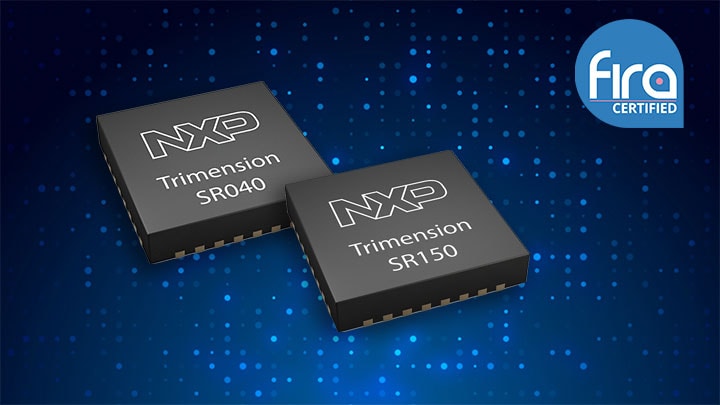The evolution of wearable devices is fueled by rapid advances in technology
including enhanced processor performance, extended battery life, continuous
connectivity, smarter sensing, monitoring and tracking and user-friendly
interfaces — all within ever-shrinking form factors and power budgets.
Evolution of Smartwatch Designs
Smartwatches have become essential
wearables
for our smart, connected and active lifestyles. The smartwatch concept arose
decades ago with sci-fi gadgets like Dick Tracy’s two-way wrist radio/TV, the
Jetson’s clunky video wristwatches and “wrist communicators” debuting in Star
Trek movies. Digital watches with LED screens—the precursor to
smartwatches—came to market in the early 1970s, and the first true
smartwatches with processing and telecom capabilities appeared in the late
1990s.
Smartwatches continued to evolve in the 2000s, competing with wrist-worn
fitness trackers. Today’s designs are feature-rich, wirelessly connected
“wrist computers", offering the biometric health monitoring capabilities of
fitness trackers, along with touchscreen and voice control, graphics,
multimedia and mobile telephony – all the functionality of a smartphone in a
wrist-sized form factor.
Trending Now: Feature-Laden Smartwatches for Health-Conscious Lifestyles
Growing consumer demand for feature-rich smartwatches is one factor driving
this market growth, especially among tech-savvy millennial and urban
populations. Smartwatches are attracting new users, including older adults, as
wearable makers add health-monitoring features, enabling users to track their
health status and biometrics in real time.
Today’s smartwatches are more capable than models from even a few years ago.
Smartwatches typically communicate with the cloud and streaming services
through Bluetooth-connected smartphones or directly through Wi-Fi, 4G-LTE or
5G. Battery life has improved in recent years, extending from days to multiple
weeks between charges for some smartwatch models. Organic LED (OLED) and
active-matrix organic LED (AMOLED) displays, vivid graphical user interfaces
with animation, voice control and audio playback provide more intuitive user
experiences. Today’s smartwatches also have more robust, built-in security
features to protect personal and commercial data.
Smartwatch biometric sensing capabilities have become more sophisticated,
extending beyond the features of basic fitness/activity trackers to support an
array of health monitoring functions including SOS emergency services, safe
zone alerts, contact tracing and vitals monitoring and reporting. Some
smartwatches also offer “wearables as a service” capabilities including
personal health and well-being monitoring (for instance, sleep patterns, heart
rate monitoring, fall detection and oxygen levels), location monitoring for
kids, older adults and pets and remote healthcare for cardiac care, diabetes
management and physical therapy.
Watch our demo video on smartwatches and wearables.
Many feature-packed smartwatch designs offer sport modes with virtual
trainers, music storage and playback, voice calling capability, local voice
control and cloud-based voice assistants like Amazon Alexa and Google
Assistant. For example,
Amazfit GT3 watches offer advanced features such as up to 21-day battery life, an
Ultra HD AMOLED display, 24-hour health management, more than 150 sport modes
and Amazon Alexa for voice control. Another standout is
Garmin’s Venu 2 Plus, a fitness smartwatch built for active lifestyles supporting voice
calling, animated watch workouts, sleep scores and general health monitoring.
Wearables are also evolving beyond the wrist to include eyewear such as
Ray-Ban’s Stories smart glasses with photo capture, video recording and audio playback
features in a stylish form factor.
Designing Battery-Friendly, Secure Smartwatches with NXP’s i.MX RT MCU
Families
To compete in today’s dynamic smartwatch market, it helps to work with a
leading platform provider. By using a market-proven processing platform, you
can focus on what you do best: designing innovative, differentiated smartwatch
products. As your wearables technology partner, NXP offers a broad low-power
microcontroller (MCU) portfolio, advanced voice software, robust security
technology and a comprehensive development ecosystem.
Successful smartwatch designs begin with an optimized system-on-chip (SoC)
platform. NXP’s
i.MX RT500
and
i.MX RT600
families of secure crossover MCUs offer an ideal balance of low-power
processing and high-performance capabilities, along with rich integration and
advanced security. The i.MX RT500/600 MCUs pair the real-time functionality of
an Arm® Cortex®-M33 core with a high-performance
DSP core to help unlock the potential of smart, connected wearable
applications.
Extend Battery Life with NXP’s Low-Power Technology
The i.MX RT 500/600 MCUs provide an optimal balance of high performance and
power efficiency. The MCUs can run parallel tasks leveraging the Arm®
Cortex®-M33 core running at up to 300 MHz, integrated
Cadence® Tensilica®
Fusion F1 or HiFi 4 DSP cores, a PowerQuad math engine, a 2D GPU for graphics
processing and a host of on-chip peripheral interfaces. This clever
multitasking approach enables wearable designs to use the right processing
tool or interface for the task.
The MCUs offer multiple power modes for energy-efficient heterogeneous
computing. For example, the Cortex-M33 processor can remain in sleep mode
while the DSP is hard at work. The i.MX RT MCU power architecture supports
dynamic voltage and frequency scaling (DVFS) and multiple clock dividers,
enabling easy throttling of processing cores. By adjusting core speeds up or
down as needed, wearable designs can use integrated, low-power clock sources
instead of higher power external sources. These low-power MCU innovations
enable an extended battery life of up to three weeks in smartwatch mode.
Add Voice to Your Smartwatch Designs for Hands-Free Control
NXP’s i.MX RT MCUs with integrated Tensilica Fusion 1 or HiFi 4 DSPs provide
the right level of high-performance audio DSP capabilities to enable
smartwatch voice assistance and voice calling features. Our
voice intelligent technology
(VIT) is a free, comprehensive voice control software package delivered as a
ready-to-use library in the
MCUXpresso SDK.
VIT enables customer-defined wake word and voice commands using NXP’s
online model creation tool. In addition to VIT, NXP offers premium voice enablement and speech
processing technologies including:
-
VoiceSeeker – advanced audio front-end signal processing for voice control,
incorporating beamforming, advanced noise reduction and acoustic echo
cancellation
-
VoiceSpot – low-power wake word engine, enabling reliable voice triggering
-
Conversa – multi-microphone, full-duplex telephony suite for voice calls
Give Your Smartwatch Design Vivid Graphics and Flexible Display Interfaces
The i.MX RT500 MCUs modernize HMI design for power-sensitive applications by
enabling vivid graphics with an integrated 2D GPU. Further simplifying
graphics development, NXP’s comprehensive software ecosystem includes an
extensive list of third-party solutions from partners.
Zepp OS UI,
powered by
AMETEK Crank software, enables compelling, smartphone-like experiences in small form factors
like the Amazfit GT3 smartwatches. Based on FreeRTOS open-source code, Zepp OS
is one of the lightest smartwatch operating systems available, helping
smartwatches operate up to three weeks on a single charge on low-power,
high-performance MCUs like the i.MX RT500 family.
The AMETEK Crank Storyboard GUI framework is directly accessible within NXP’s
MCUXpresso IDE toolkit, which greatly streamlines the process of evaluating NXP MCUs and creating
rich embedded GUIs.
Secure 24-Hour Health Management
Today’s always-connected smartwatches continuously monitor health and fitness
biometrics such as heart rate and activity during the day. Sleep monitoring
also has become a popular use case for many smartwatch designs. To make it
easy to collect biometric data without CPU intervention, i.MX RT MCUs include
a low-power DMA engine and an array of low-power sensor interfaces such as the
I2C and I3C buses.
Today’s smartwatches are capable of sharing biometric data with remote health
care providers for monitoring and diagnostics. These wireless connections must
be secure and private to protect user data. Securing smartwatch designs
requires a powerful yet easy-to-implement security framework based on strong
isolation and proven hardware security technologies. To help protect
smartwatches and other wearables against intrusion, NXP’s i.MX RT MCUs offer
advanced, built-in security features including secure boot, unique key storage
and hardware acceleration of symmetric and cryptographic algorithms.
Connect with NXP and Drive the Next Generation of Smartwatches
As new smartwatch use cases emerge, NXP’s advances in crossover MCUs, wireless
connectivity, sensor interfaces, voice software and security technology will
continue to meet the evolving needs of wearable designs. NXP’s comprehensive
software solutions and third-party ecosystems help developers optimize their
smartwatch designs, reduce cost and complexity within miniature form factors
and accelerate time to market. Explore NXP’s solutions for
smartwatches and other wearables
or download our
brochure.



